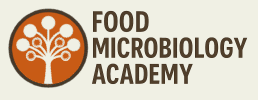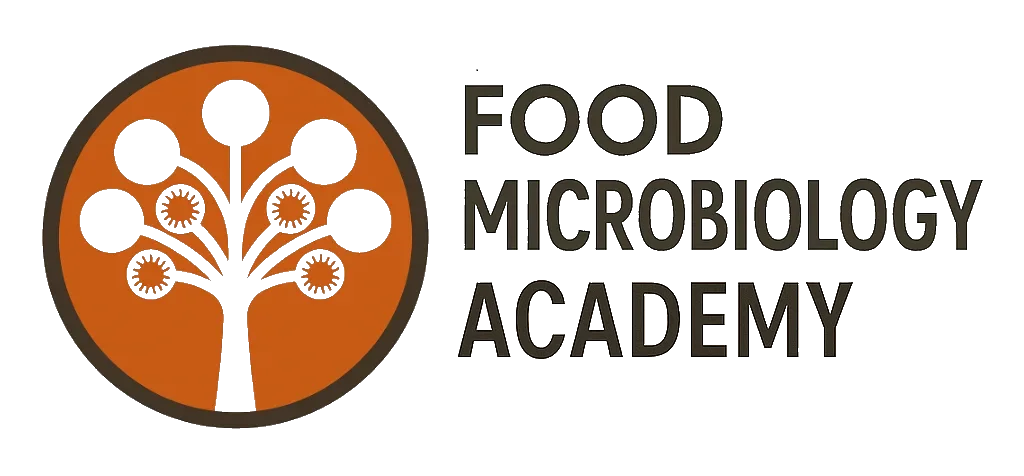I wrote this article in 1998 as a part of the coursework requirement for my Honours research year study in food science at the then University of Ballarat (now Federation University). Has the perspective of the importance of food safety training and continued professional development in this area changed in 22 years? This perspective could equally apply to food spoilage/quality concerns, but the stance of food safety was taken in this report.
In Victoria, an average of nearly 2 800 reported cases over the past seven years of a single bacterial species (NNDSS, 1998) whose most important line of transmission is via food, is quite a revealing statistic and highlights the importance of food microbiology. Here we are talking about that common poultry contaminant, Campylobacter, whose number of cases peaked at 3 555 two years ago (NNDSS, 1998). Although the food industry is diverse and dynamic and covers many areas, no specific discipline in food science is probably more important that food microbiology, This is because microbiology has an impact on almost every area, its presence is continually apparent and a let-up of training of other requirements in this area could have potentially catastrophic results. The role of the food scientist/technologist in food microbiology is extremely important because the outcomes deal with human lives and their safety and a break down in the vigilance in the area of food microbiology may result in an increase in the morbidity and/or mortality statistics and therefore increasing financial losses for that company. A good description of the role of the food microbiologist is given by Adams and Moss ( 1995) who say that it is “to help assure a supply of wholesome and safe food to the consumer”.
During university study, food scientists/technologists cover a range of subject areas however their training in microbiology should prove to be most valuable. This is because of the very nature of food, and how easily it can be, and in fact, is, contaminated No matter which area they are involved, the food scientist is constantly exposed to situations and problems involving microbiology and they need to how to deal with microbiological hazards in order to minimise risks to all.
Although, food is not a “living” commodity, it is still has a high nutritional value and is sufficiently diverse to have an impact on the growth of microbiological hazards, which varies considerably, depending on a range of factors. Therefore, it is important for the food scientist/technologist to be aware of which conditions predispose to microbial contamination. Not only this, but it is also necessary to be up to date with production techniques and how these could alter the food, and possibly creating ideal conditions for microorganisms to thrive in. As bacterial cells are truly amazing biological systems, they have a remarkable ability to adapt to changing environmental conditions, even those usually considered hostile. This can most often take place through mutation, and many examples have been documented, especially of antibiotic resistant strains of bacteria, even in food (Vazquez-Moreno et al., 1990, Facinelli et al., 1991, Manie et al., 1998, Klein et al., 1998, Perreten et al., 1998). A more common and widespread example of resistance encountered in the food industry is of the tolerance to low pH”. Many instances of food-borne disease have occurred with bacteria being transmitted in acidic foods/drinks such as apple cider (Besser et al., 1993) and fermented meat (CDC, 1995).
This ability of bacteria to mutate and/or habituate to changing conditions in food emphasises the need for continuing education of food scientists/technologists. If not, they will not be able to recognise potential hazards. These aims could be fulfilled most effective by periodical “in-house” training programs. induction and revised training programs could also cover food and personal hygiene (Adams and Moss, 1995), which are so important in the food production environment. Food scientists/technologists should also be encouraged to attend conferences and read a wide variety of journals as well as browsing food science websites. These steps would go a long way to ensuring that they are well informed of risks in the microbiology area, especially “emerging” pathogens.
Emerging pathogens are those which are of increasing importance at the present time, which did not cause a significant amount of disease before, or did a long time ago but have re—emerged as important pathogens. These are the organisms which are most iikely to “surprise” the unwary food scientist/technologist who is unaware that they are increasing in significance as a pathogen. Examples include Vibrio vulnificus and Escherichia coli 0157:H7 (Tauxe, 1997). If a food scientist/technologist is unfamiliar with current emerging pathogens, even if that organism is isolated and identified, the food might be passed as “OK”, because the presence of the organism it is not considered a risk.
Standards are present in all industries and are necessary in order to maintain a consistent level of production. These standards are mostly set by governments, but sometimes companies also set their own standards. in some cases. the government could set a general guide for a standard and the industry adopts specific guidelines which will ensure those general government standards or legislation are met. Food standards and regulations vary between locations and also alter from time to time within the one state. Due to the importance of adhering to such regulations, it is vital food scientistsltechnologists be kept up to date by their employers. As with most microbiological mishaps, violation of such standards and regulations could easily result in illness or death to consumers. This could occur if a particular combination of growth conditions were found to be especially encouraging of an emerging pathogen. The standards would be altered according to ensure such conditions are not present in foods. However, if the food scientists/technologists are not notified, they will maintain the old standard, which may result in dangerously high levels of the organism present after production.
Microbiological hazards are unpredictably severe and are an all too common occurrence in food. Since it is virtually impossible to eliminate microorganisms from food, it is the responsibility of food scientists/technologists to minimise these risks as much as possible. This is best achieved by company training as well as self-learning of the potential hazards, for example through casual reading of books and journals. This can be only done however, if the food scientist/technologist is dedicated to ensuring the highest quality (contaminant free) food, and if they are, then this is what makes a good food scientist/technologist.
References
Adams, M. & Moss, M. (1995). Food Microbiology. Cambridge, U.K.: Royal Society of Chemistry.
Besser, R., Lett, 8., Weber, J., Doyle, M., Barrett, T.. Wells, J. & Griffin, P. (1993). An outbreak of hemolytic uremic syndrome from Escherichia coli 0157:H7 in fresh, pressed apple cider. Journal of the American Medical Association 269 : 2217-2220.
CDC / Centers for Disease Control and Prevention. (1995). Community outbreak of hemolytic uremic syndrome attributable to Escherichia coIi O111:NM. Morbidity and Mortality Weekly Report 44 : 550-558.
Facinelli, B., Giovanetti, E., Varalda, P., Casobri, P. & Fabio. U. (1991). Antibiotic resistance in foodborne Listeria spp. The Lancet 338: 1272.
Klein, G., Pack, A. & Reuter, G. (1998). Antibiotic resistance patterns of enterococci and occurrence of vancomycin—resistant enterococci in raw minces beef and pork in Germany. Applied and Environmental Microbiology 64 : 1825-1830.
Manie, T., Khan, 3., Brozel, V., Veith, W. & Gouws, P. (1998). Antimicrobial resistance of bacteria isolated from slaughtered and retail chickens in South Africa. Letters in Applied Microbiology 26 : 253-258.
NNDSS/National Notifiabie Diseases Surveillance System. (1998). Communicable Diseases – Australia. [online]. URL : http://www.health.gov.au:80/pubhlth/cdilnndssl year005.htm [Accessed 12 September 1998].
Perreten, V., Giampa, N., Schuler-Schmid, U. & Teuber, M. (1998). Antibiotic resistance genes in coagulase-negative Staphylococci isolated from food. Systematic and Applied Microbiology 21 : 113-120.
Tauxe, R. (1997). Emerging foodborne diseases: An evolving public health challenge. Emerging Infectious Diseases 3 : 425-434.
Vazquez-Moreno, L., Bermudez, M, Langure, A., Higuera-Ciapara, 1., Diaz De Aguayo, M. & Flores, E. (1990). Antibiotic residues and drug resistance bacteria in beef and chicken tissues. Journal of Food Science 55 : 632-634.




Thanks for ones marvelous posting! I genuinely enjoyed reading it, you happen to be a great author.I will be sure to bookmark your blog and may come back in the future. I want to encourage continue your great work, have a nice morning!
Many thanks Brigida for your feedback and especially for taking the time to leave a comment, much appreciate that effort. Your words are truly encouraging!